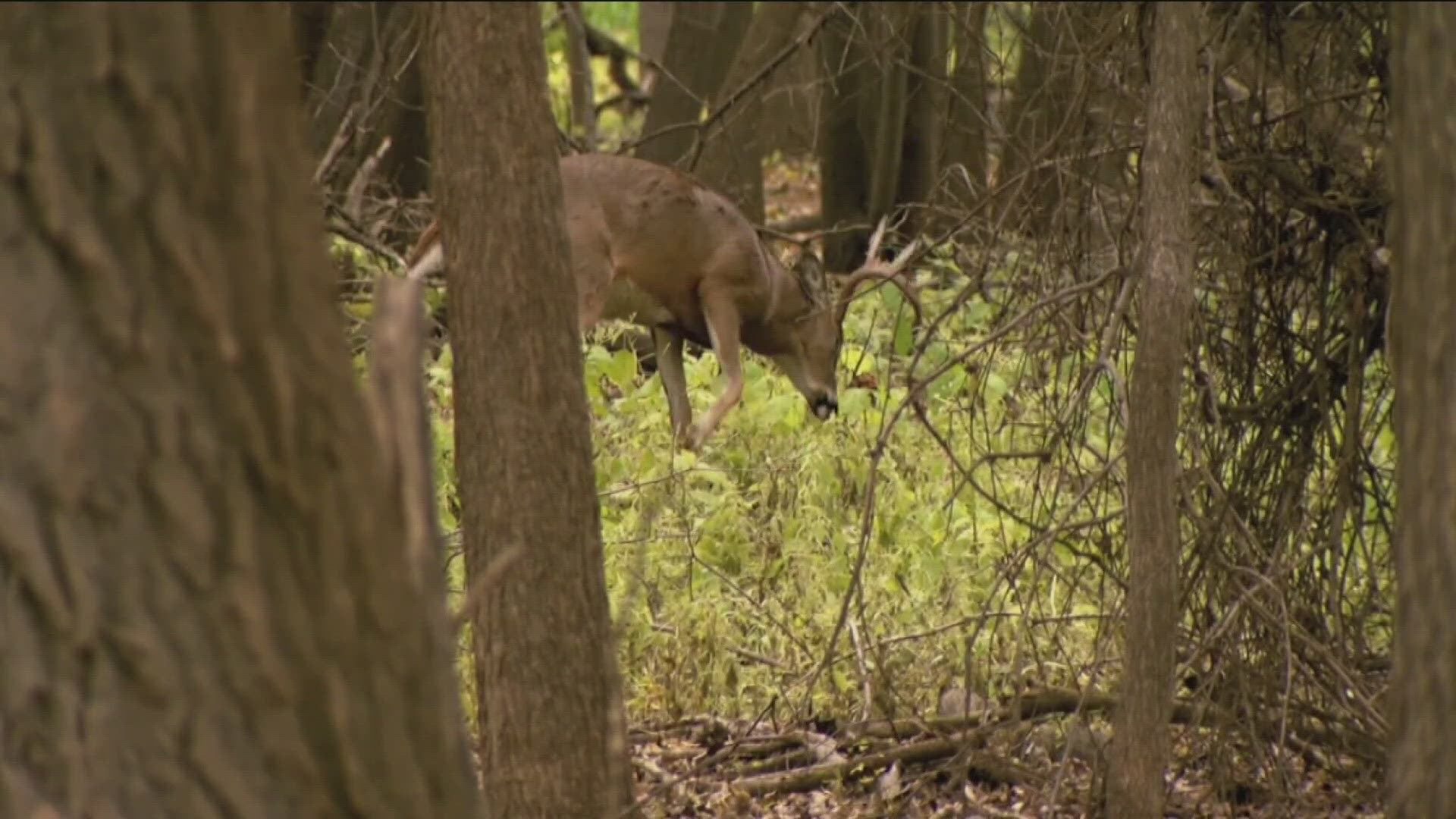NAMPA, Idaho — The fires ongoing in Southwest Idaho have been taking a toll on the locals, including wildlife.
Concerns by the public have been brought to the Idaho Department of Fish and Game’s (IDFG) attention regarding potential fire impacts on big game such as elk and deer.
Brian Pearson, Regional Communications Manager at IDFG, has expressed that it is unclear how much actual damage has been done to Idaho lands as the fires are still ongoing.
IDFG is addressing the public’s concern about whether the big game will have enough food for the coming winter season.
Pearson said emergency feeding is a last-resort solution, but when it is necessary, they “have a supply of food that is specifically designed for elk and deer species, and that's getting taken out and put on the ground designated feed sites where it's deemed appropriate."
However, IDFG still has hopes for wildlife to live off of forage that is left after the fire season. “Elk and deer herds have been living with fire for thousands and thousands of years, and herds generally are able to rebound," Pearson told KTVB Wednesday.
The agency is primarily relying on the Winter-Feeding Advisory Committee to assess overall forage damages.
The committee will hold its first meeting this fall, earlier than previous years due to the circumstances. Meetings will continue throughout winter to look at the land conditions and make recommendations to the director of IDFG .
The committee is made up of volunteers in the community committed to keeping Idaho’s land and wildlife safe.
“They are representatives within their communities. They are sort of our eyes and ears out there. And so, they play a substantial role in advising our regional supervisor," Brian Pearson said
In extreme cases, emergency winter feeding could be considered if there is any concern about public safety hazards or the possibility of a large animal die-off. Although the committee can advise and provide suggestions, the decision is ultimately up to Fish and Game.
Fish and Game officials are closely monitoring the ever-changing fire situation since maintaining wildlife through natural forage is the ultimate goal.
Proactive measures are already in process for IDFG. Regional Communications Manager Brian Pearson said they've planted 3500 acres of winter cover crops in partnership with local landowners.
The agency is currently in preparation mode, hoping not to reach the emergency feeding state.
Pearson also expressed the importance of citizens not feeding the wildlife themselves.
"This is a thoughtful process that we have citizen involvement on, and it's not a decision that we take lightly. And so we would ask that you know, people respect the process and understand that these are informed decisions that we're making," he said.
The decision of emergency-feeding will be made public once it has been made. The accessible Winter-Feeding Advisory meetings are also open for members of the community to attend. IDFG does consider citizen input when making these decisions, however, the agency has a specific process to ensure proper care for wildlife.

